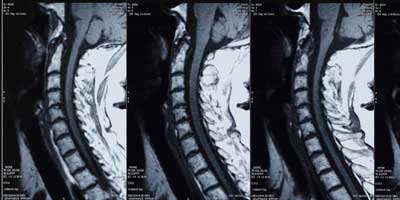Locations

Fax: (303) 762-9292

The Importance of Proper Body Mechanics - Keeping Your Spine Healthy
 Body mechanics is a term used to describe the ways we move as we go about our daily lives. It includes how we hold our bodies when we sit, stand, lift, carry, bend, and sleep. Poor body mechanics are often the cause of back problems. When we don't move correctly and safely, the spine is subjected to abnormal stresses that over time can lead to degeneration of spinal structures like discs and joints, injury, and unnecessary wear and tear.
Body mechanics is a term used to describe the ways we move as we go about our daily lives. It includes how we hold our bodies when we sit, stand, lift, carry, bend, and sleep. Poor body mechanics are often the cause of back problems. When we don't move correctly and safely, the spine is subjected to abnormal stresses that over time can lead to degeneration of spinal structures like discs and joints, injury, and unnecessary wear and tear.
That is why it is so important to learn the principals of proper body mechanics. But don't worry, it's not complicated. And once you get used to them, they can easily be incorporated into your daily life. You will be glad you learned them as they can save you from back pain and discomfort.
Posture
We have all been told since childhood to "stand up straight". But it's easy to get into bad habits. Good body mechanics are based on good posture. Good posture means the spine is in a "neutral" position - not too rounded forward and not arched back too far. But what does good posture look like?
It's easy, follow these few steps:
- Stand with your feet apart.
- Create a small hallow in your lower back by tucking the tailbone in and tilting your pelvic bone slightly forward. This is done by tightening the muscles of the buttocks and thus, rotating the pelvis into the neutral position. Be careful not to arch too much.
- Pull the shoulders back and lift your chest.
- Lift your chin until it is level and relax your jaw and mouth.
That's it, proper posture! Feel how balanced the spine is? Very little energy is now required to keep it that way. Practice this position until it becomes second nature.
Being aware of your posture during all of your daily activities is the best way to ensure you are using good body mechanics. Here are a few exercises that can help improve your posture.
- Chin Tuck:
- Sit or stand using proper posture.
- Gently pull your chin back to a comfortable position
- Perform this exercise in sets of ten, 2-3 times daily.
- Shoulder Squeeze
- Sit or stand using proper posture.
- Bring you elbows behind you while squeezing your shoulder blades together.
- Hold for 5 seconds
- Perform this exercise in sets of ten, 1-2 times daily.
Standing
Millions of people spend a good deal of their time on their feet. Standing work, including bending, lifting, carrying and reaching can be tough on the back - especially if proper body mechanics are not being used. Use the following guidelines to minimize the risk of injury to your back when doing standing work:
- Avoid standing in one position for prolonged periods of time. Change your position as often as you can. This will not only help relieve stress on your spine, it also helps increase circulation and decrease muscle fatigue. When you can, stretch. Gentle stretching exercises during a break can help ease muscle tightness.
- Be aware of your posture. Are you standing correctly? Check and double check throughout your day.
- Make sure the surface you are standing on is firm and level.
- If possible, lean on a solid support. This can help reduce fatigue during long periods of standing.
Other important tips to remember:
- When lifting an object, avoid bending and twisting at the same time. Instead, face the object and bend at the knees (not the back).
- Before lifting, move close to and directly in front of the object. Make sure your feet are flat on the floor and shoulders are apart. Bend the knees and lift smoothly. Use the same movement when putting the object down again.
- Avoid overreaching. If you have to reach up to a high level, make sure you are standing on a firm level surface. Avoid standing on tiptoes. Not only is this an unstable position to stand in, for prolonged periods of time it can place unnecessary strain on the back and neck.
Sitting
Whether sitting at a desk or at home watching television, good body mechanics are still important to keep in mind. For deskwork, consider investing in an ergonomically enhanced chair. What does proper sitting look like?
- Place your buttocks at the back of the seat while maintaining a small space between the back of your knees and the seat of the chair.
- Place your feet flat on the floor with your knees bent at a 90° angle.
- Pull your shoulders back and lift your chest.
- Lift your chin until it is level and relax your jaw and mouth.
 If your chair has armrests, make sure they are positioned to support the weight of your arms. Not too high to make you hunch or too low to make you reach. Footrests can also be a helpful way to maintain good posture while sitting. Make sure the footrest is positioned so that your knees are bent comfortably and are level with your hips.
If your chair has armrests, make sure they are positioned to support the weight of your arms. Not too high to make you hunch or too low to make you reach. Footrests can also be a helpful way to maintain good posture while sitting. Make sure the footrest is positioned so that your knees are bent comfortably and are level with your hips.
For prolonged periods of sitting, make sure you have enough support for your lower back. Look for a chair that has adjustable lumbar support. If that is not possible, you can increase your back support by using a lumbar roll or even a rolled up towel or cushion placed behind your lower back.
Keep in mind that even sitting in the "correct" position for long periods of time will eventually become uncomfortable. Don't forget to take breaks, get up, move around and stretch! This will reduce the stress on your spine and help prevent muscle fatigue and stiffness.
Sleeping
We spend about one-third of our time in bed, so we can't ignore how our bodies are positioned during sleep. As during our waking hours, the goal is to maintain a neutral spine even while we are in bed. Here's how:
- Make sure you are sleeping on a firm mattress.
- Avoid sleeping on your stomach or with your head elevated on an oversized pillow. These positions cause the back to arch and places stress on the spine.
- The side and back are the best positions for maintaining a neutral position and a must for anyone with back or neck problems.
- Place a pillow between your knees (for side sleeping) or behind your knees (for back sleeping). This will help keep your spine in the right position and help ease stress on the lower back.
- Use a pillow that allows you to keep your head aligned with the rest of your body. Numerous and/or oversized pillows may look great on a made bed but do not necessarily benefit your back while sleeping.
Lifting
The process of lifting places perhaps the greatest loads on the low back and therefore, has the highest risk of injury. Use of proper lifting mechanics and posture is critical to prevent injury. In the end, it is more important how you lift than how heavy a weight you lift. Here are a few tips on how to lift safely:
- Place the load immediately in front of you.
- Bend the knees to a full squat or lunge position.
- Bring the load towards your chest.
- Assume a neutral position with your back.
- Tighten the lumbar and buttocks muscles to "lock" the back.
- Lift now from the legs to the standing position.
- DO NOT:
- Lift from a twisted / sideways position.
- Lift from a forward stooped / imbalanced position.
As you can see, proper body mechanics are vitally important for keeping your spine healthy. And it's easy to incorporate these principals into your daily life. It may seem unnatural at first, but if you keep at it, they will easily become routine. Your back will thank you for it!
If you are having back pain, have questions about a spinal condition, or need help maintaining good body mechanics, contact us here at CCSI. One of our spine specialists can help you.









